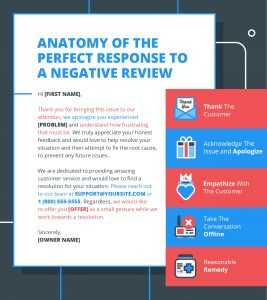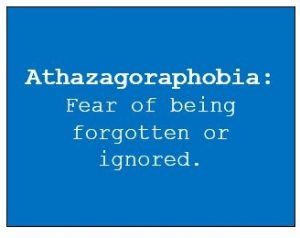As a business owner, you have to love eChecks. For starters, electronic checks are cheaper and faster to process. Additionally, processing eChecks are secure, better for the environment, and allow you to set-up recurring billing.
Simply put, if you aren’t accepting eChecks, then you’re missing out on a simple way to reduce needless friction in your life. After all, eChecks are one of the best ways for customers and clients to pay you directly.
However, there’s one question that I frequently get asked? Can I process eChecks from international customers?
What is an eCheck?
For those new to eChecks, here is a brief explanation of what exactly an eCheck is.
Angela Ruth in a previous Due post, provides a clean description of what an eCheck is:
“An eCheck is simply a form of online payment. In this case, money is electronically withdrawn from the payer’s checking account, transferred over the ACH network, and then deposited into the payee’s checking account.
Because merchants often pay a small fee to process eCheck payments, they’re often popular for high-cost items like your mortgage, car payment, or high-cost monthly fees, like retaining an attorney.
With an ACH merchant account, businesses can withdraw payments for goods or services directly from their customer’s bank accounts. Payments must be authorized by the customer, however.
This can be either through a signed contract, acceptance of a website’s “Terms and Conditions” or even a recorded voice conversation.”
Although used interchangeably, eChecks and ACH are not the same thing.
ACH stands for Automated Clearing House. This isn’t a physical place, but is a network that connects all banking and financial institutions in the United States. eChecks, on the other hand, is a type of electronic funds transfer (EFT) that uses a network, such as the Automated Clearing House.
As Angela Ruth further explains, “The primary distinction between ACH and eChecks is the party that keeps the payment information and sends the payments.
For example, specific entities that use the banking information you put on the enrollment forms manage ACH. This establishes a recurring debit from any account you choose.”
Can eChecks work for international charges?
Let’s have NationalACH answer this question;
“Electronic checks are used to collect payments from US buyers. Merchants can be located in the US or internationally. If you have customers located outside the US, you can set up an account to accept local bank transfers from customers located in many countries throughout the world.”
With that in mind, it’s important to note that there is no single “Global ACH” or “international ACH.” The reason? There is no official governing standard called “global ACH” or “international ACH.”
Instead, when we talk about “Global ACH,” we’re really just talking about the direct deposit of funds into a country’s specific clearing mechanism. Again, in the States that would be the ACH network. In Europe that’s SEPA, the Single Euro Payments Area. Australia uses “Direct Entry,” while India relies on the the National Electronic Fund Transfer (NEFT) system.
If you have international customers, then you should consult someone familiar with that country’s equivalent to the ACH network to find out which clearing mechanisms are available in that part of the world.
What is a local bank transfer and why you need it as an international payment?
A local bank transfer is simply the transfer of funds from one bank account to another bank account in the same country. For cross-border payments, this means that there’s an intermediary, like a payment system like Due or a financial organization.
Working with an intermediary means you’ll avoid currency conversion fees and third-party banks. Also, funds are available in one to three business days.
Furthermore, with local banks transfers you can attract more international customers, while automating and consolidating your global payments. This doesn’t just save you time and money, it allows you to focus on growing your business.
How to process eChecks for cross-border remittance?
Processing international eCheck transactions typically involve these four steps:
- The payee, the party receiving the payment, first offers an electronic payment. The payer, which is the person submitting the payment, then gives their permission by filling out a form or verbal confirmation.
- The payee’s payment information, like bank routing number, bank account number, type of account, and transaction amount. This info is submitted to an online payment processing service like a payment processor.
- Next, the drafting bank communicates with the bank in the other country with the transfer details. Unlike wire transfers, these transactions usually run in bulk. This minimizes manual intervention so international payments are easily automated.
- Finally, the payment processor sends a notification to the parties involved that the payment is on the way.
Considerations regarding eChecks and international payments.
Just like accepting eChecks from your domestic customers, processing global eChecks are fast, cheap, and secure. However, there are several considerations to be aware of before processing cross-border eCheck payments.
- Bank routing information is different in each country. To make matters worse they can be complex and change frequently. You will want to have a basic understanding of the syntax for routing to foreign bank accounts and work with someone who is familiar with this information.
- You may want to offer currency conversion services. Some countries, such as India, have complex conversion issues. This streamlines the payment process for these global customers.
- Work with a trusted payment management system. This will save you time and money and make the entire cross-border payment process run as smoothly as possible.
- If you’re sending money overseas, you’ll have to clear the US Treasury’s OFAC (Office of Foreign Assets Control) blacklists. This ensures that you’re following anti-terror/anti-money-laundering compliance.
- Finally, just like when accepting any type of global payment business owners should research local rules and regulations. Also don’t forget to be aware of local preferences, work with a global payment solution, build trust with your customers, and hire people who are familiar with the region.
Business & Finance Articles on Business 2 Community
(37)
Report Post





